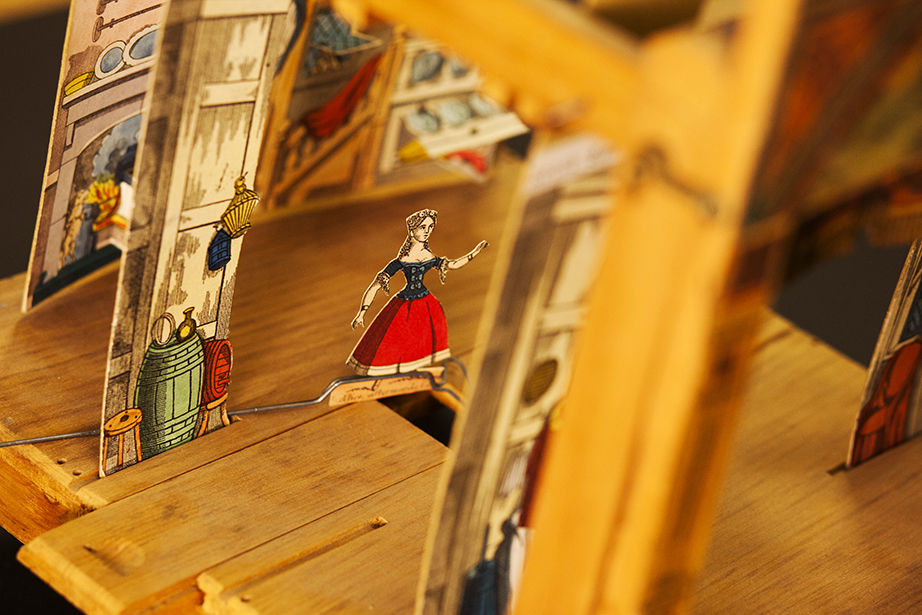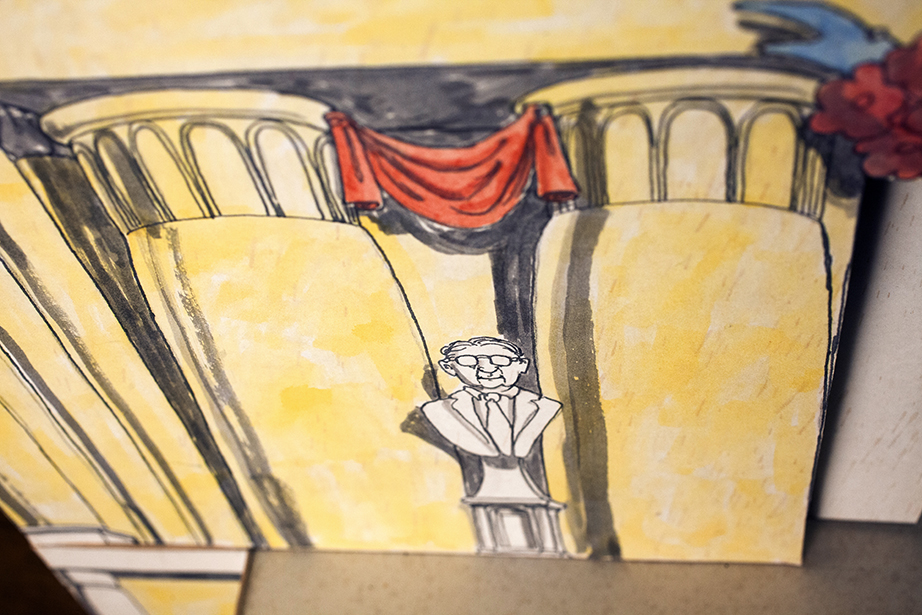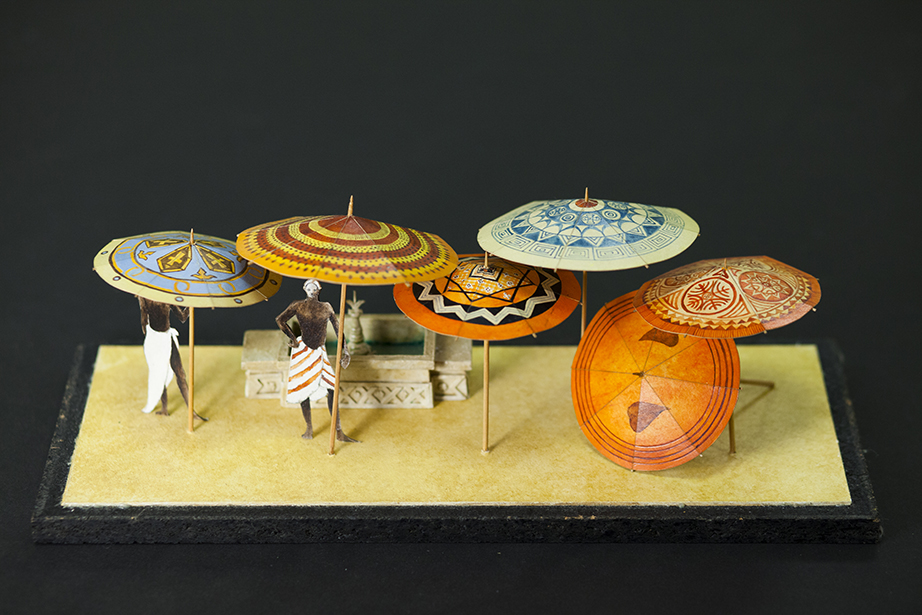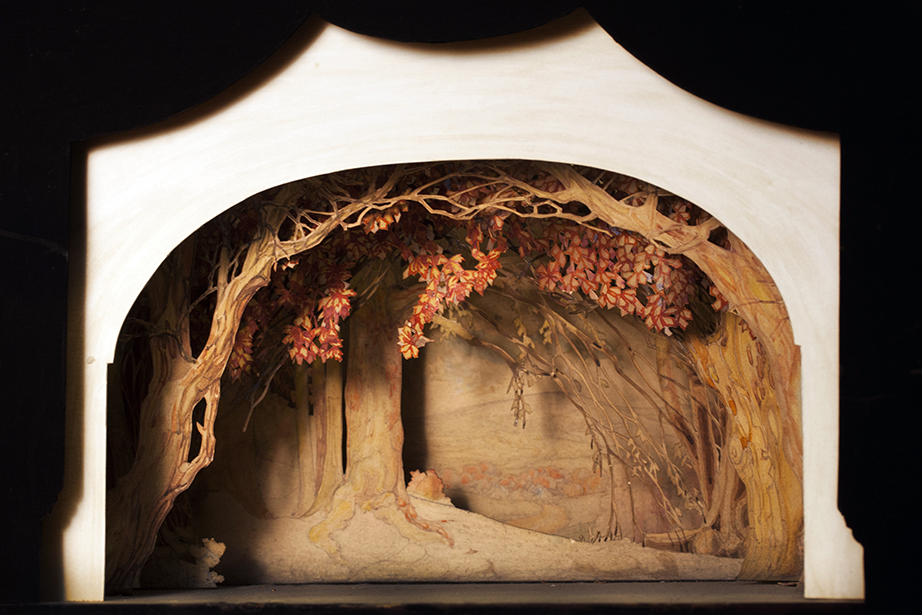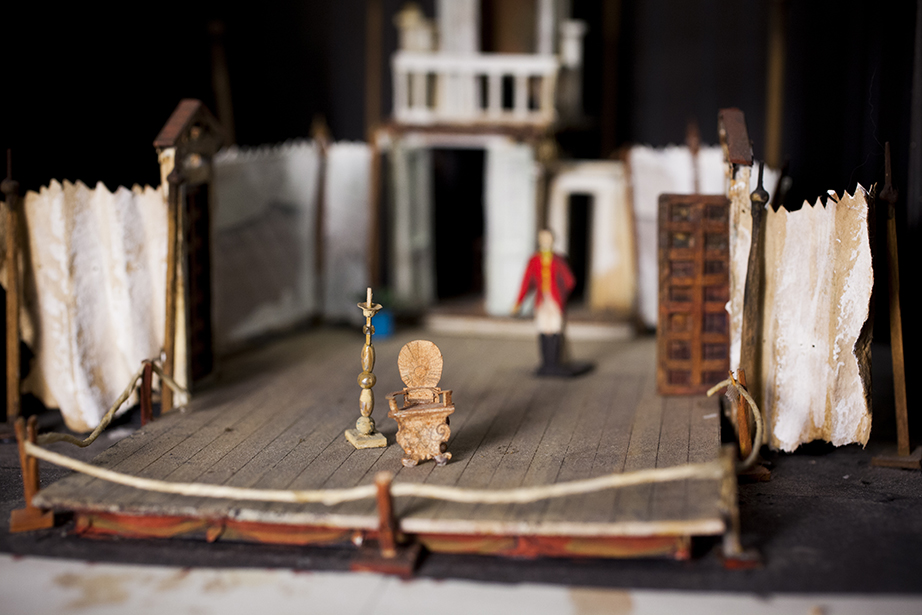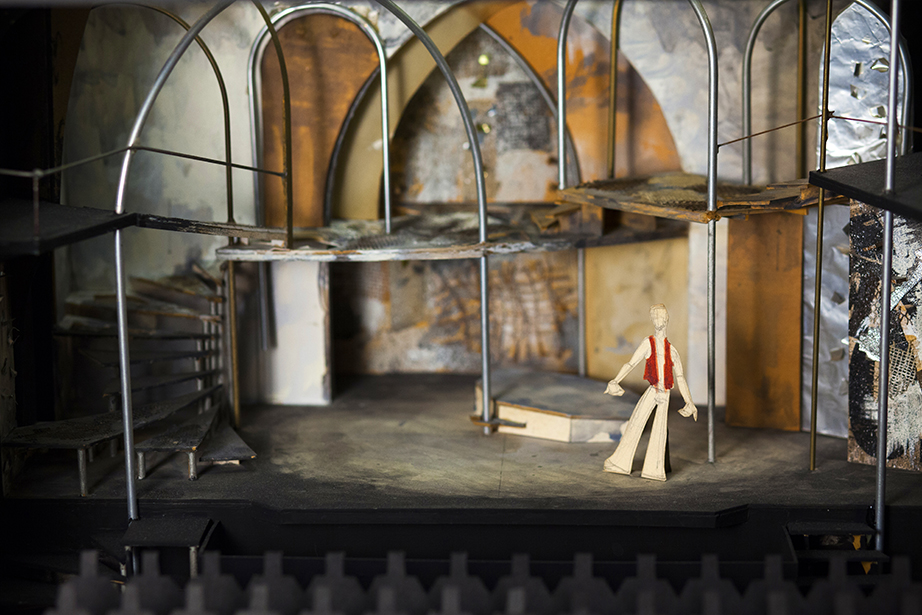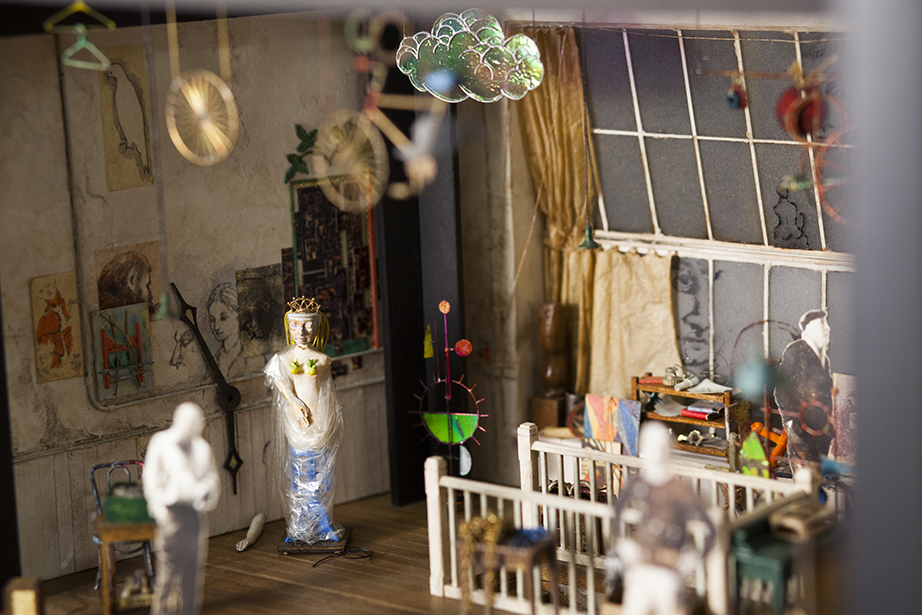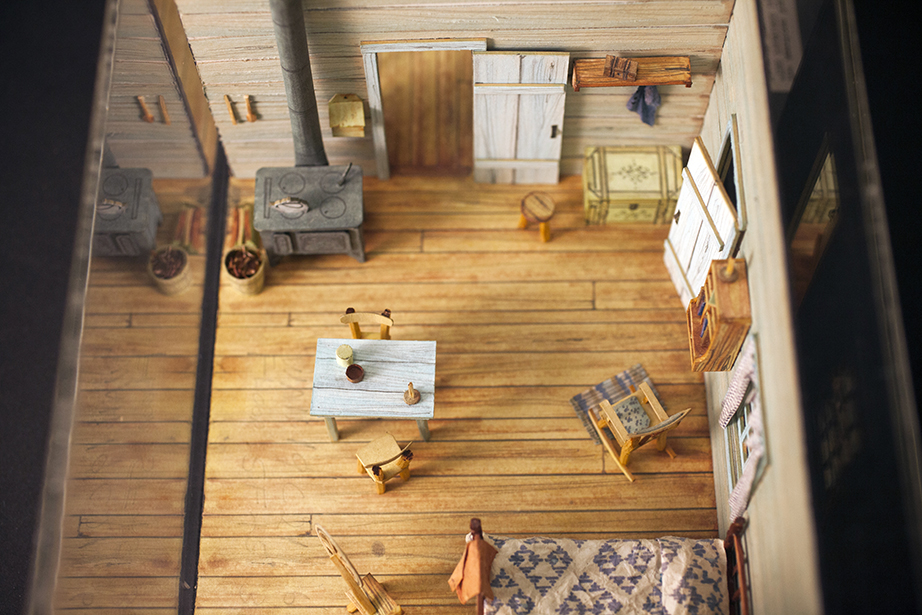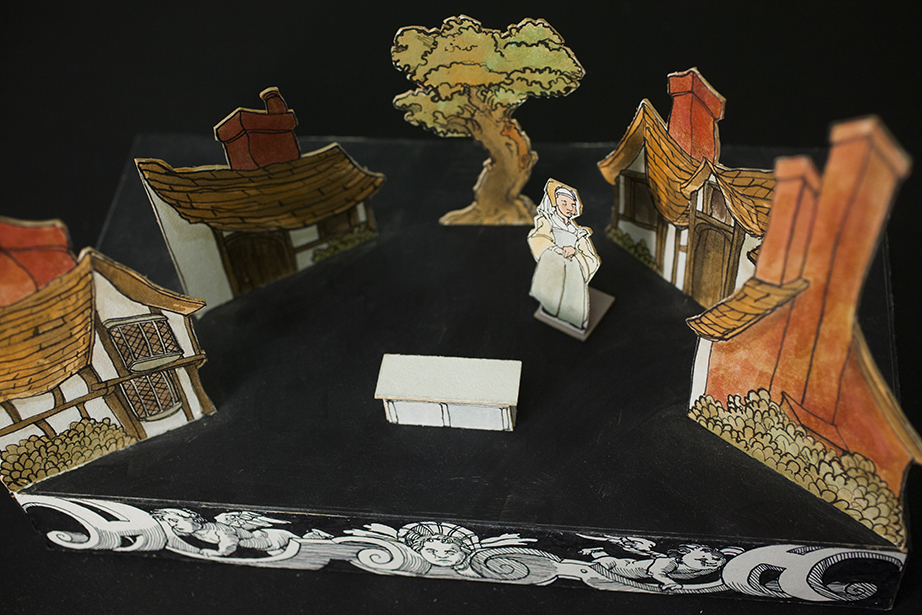
Stephanie Mitchell/Harvard Staff Photographer
Tiny stages, grand creativity
Past shows, some forgotten, live on in model sets of Harvard Theatre Collection
The Harvard Theatre Collection is among the oldest and largest of its kind in the world. Within the climate-controlled subterranean reaches of Houghton Library are shelves, drawers, and boxes full of theater, dance, movie, and music items.
By one estimate, the 113-year-old collection’s 22,000 linear feet of holdings, if stacked vertically, would be 3 miles high. There are 4 million playbills and programs, along with countless: libretti, sheet music, tickets, posters, rare books, scores, photographs (about 1.2 million), oil portraits, figurines, and sculptures (about 600). There are even eight boxes of Javanese metal puppets.
The collection’s “realia,” or personal effects, include a piece of 100-year-old wedding cake and a tin of decades-old butter cookies. “They look way too good,” said acting curator Susan Pyzynski.
Among the riches, perched on file cabinets, are a few dozen model stage sets, mockups made of paper, metal, plastic, and wood that in many cases are from long-ago Harvard student productions. Some look fresh, including the tiny figures and bright sun umbrellas that modeled the musical “Timbuktu!” a few decades ago.
Some are fragile. “They’re not exactly made to last,” offered Pyzynski. Still others hold time in a bottle. The set of “Sensation!,” a rock ’n’ roll remake of “Romeo and Juliet” from 1970, features a tiny longhaired figure wearing a vest and bell bottoms. Tempus fugit.
There are miniatures sets of stage classics (“The Magic Flute,” “Evita”). Some are mysteries awaiting explication by theater scholars, like the unlabeled, intricate model of deep haunted woods, right out of a fairy tale. Still other models call back the earliest days of theater. For one, the collection has several scaled-down renderings of Shakespeare’s Globe Theater. Said Pyzynski, “You can never have too many of those.”



